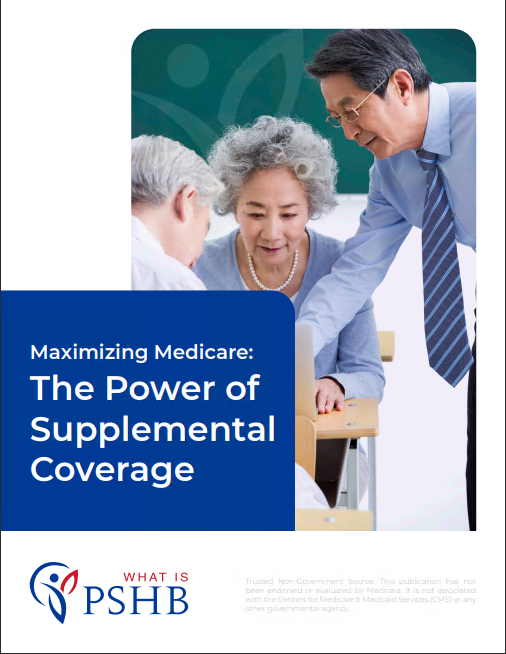Key Takeaways
-
Turning 65 doesn’t trigger automatic Medicare enrollment unless you’re already receiving Social Security. You must take timely action or risk coverage gaps and penalties.
-
For Postal retirees under PSHB, enrolling in Medicare Part B is mandatory for many, especially if you’re Medicare-eligible and retired on or after January 1, 2025.
Hitting 65 Isn’t Enough—You Need to Take the First Step
It’s a common misunderstanding: you turn 65 and assume Medicare enrollment is automatic. But that only applies if you’re already receiving Social Security retirement benefits at least four months before your 65th birthday. If you’re not, you need to actively enroll yourself.
This misunderstanding can have lasting consequences. For Postal Service retirees, especially those transitioning to the Postal Service Health Benefits (PSHB) Program in 2025, not enrolling on time in Medicare Part B can mean losing access to full health coverage.
Your Enrollment Window: What You Need to Know
Medicare enrollment begins during what’s called the Initial Enrollment Period (IEP). It spans seven months—three months before your 65th birthday month, your birthday month, and the three months after.
-
If you enroll before your birthday month, coverage begins the month you turn 65.
-
If you wait until your birthday month or later, coverage will be delayed.
This delay can lead to uncovered medical costs if you need care while waiting for coverage to begin. And with the PSHB program requiring many annuitants to have Medicare Part B, you could end up with incomplete or suspended benefits.
If You Missed the IEP—Your Next Opportunity Isn’t Immediate
If you don’t enroll during your Initial Enrollment Period and don’t qualify for a Special Enrollment Period (more on that shortly), you’ll need to wait for the General Enrollment Period (GEP) from January 1 to March 31 each year.
However, your coverage won’t begin until July 1, and you may have to pay late enrollment penalties—an added cost that continues for as long as you have Part B.
Special Enrollment Periods (SEP): Limited and Conditional
You may be eligible for a Special Enrollment Period if you’re still working and covered under an employer health plan. But if you’ve retired or are not actively working, the SEP won’t apply. This is especially important for Postal retirees in 2025 under the PSHB program, where Medicare Part B enrollment is required in many cases.
In 2024, a one-time Special Enrollment Period ran from April 1 to September 30 for certain annuitants needing to enroll in Part B. If you missed that window, and you’re now 65 or older, you’ll likely need to wait for the next GEP.
PSHB and Medicare Part B—What the New Rules Mean for You
The PSHB program rolled out in 2025 and brought several new requirements. One of the most critical is this:
-
If you are a Medicare-eligible Postal retiree or family member, and you retired on or after January 1, 2025, you must be enrolled in Medicare Part B to maintain full PSHB coverage.
Those who were already retired by that date and not enrolled in Part B are generally exempt—but they need to double-check eligibility.
What Happens If You Don’t Enroll in Medicare Part B
Failure to enroll in Medicare Part B if it’s required under PSHB means:
-
You could lose access to full health benefits.
-
Your PSHB plan might not cover certain services.
-
You may be responsible for the full cost of outpatient services that would otherwise be shared with Medicare.
PSHB coverage is designed to work with Medicare—not replace it. Part B covers outpatient care, doctors’ services, preventive services, and more. Skipping enrollment risks duplicating costs or creating dangerous coverage gaps.
Don’t Confuse FEHB Rules with PSHB Expectations
Under the former Federal Employees Health Benefits (FEHB) program, Medicare Part B enrollment was optional. Many retirees chose not to enroll if they were satisfied with FEHB alone.
But PSHB changes the equation. If you assume the old FEHB rules still apply, you could accidentally disqualify yourself from full coverage. The new program ties Medicare more closely with your ongoing benefits.
Medicare Part A: Different Rules, But Still Important
Most Postal retirees are automatically enrolled in Medicare Part A at age 65 because they qualify based on work history. Part A covers inpatient hospital stays and usually has no premium if you or your spouse worked for at least 10 years (40 quarters).
Even though Part A is automatic for many, it’s not enough. Part B is the essential link between Medicare and PSHB.
Know the Costs of Waiting
If you delay enrolling in Medicare Part B without qualifying for a Special Enrollment Period, you’ll face a 10% premium penalty for each full 12-month period you were eligible but didn’t sign up. This penalty is permanent.
With the 2025 standard monthly premium at $185, a late enrollment penalty could add hundreds of dollars per year—for life.
Enrollment Isn’t Through OPM—Here’s Where You Go
Another common misconception is that you enroll in Medicare through OPM or the Postal Service. That’s not the case.
You must sign up through Social Security, either online at SSA.gov, by phone, or at a local Social Security office. This applies even if you’re not yet drawing Social Security benefits.
Coordinating Coverage: What You Can Expect After Enrollment
Once you enroll in Medicare Part B, your PSHB plan will generally coordinate with Medicare:
-
Medicare pays first, and your PSHB plan pays second.
-
Your out-of-pocket costs may drop significantly.
-
Some PSHB plans may waive deductibles or copayments when Medicare is your primary payer.
-
You’ll automatically receive Medicare Part D prescription coverage through an Employer Group Waiver Plan (EGWP) tied to your PSHB enrollment.
This coordination helps manage your costs and can provide more complete coverage than either program alone.
Watch Out for These Common Enrollment Mistakes
Here are several pitfalls that can complicate your Medicare enrollment or PSHB eligibility:
-
Assuming automatic enrollment: If you’re not receiving Social Security yet, you won’t be auto-enrolled.
-
Missing your IEP: A seven-month window may seem long, but it passes quickly.
-
Relying on outdated FEHB assumptions: PSHB rules are stricter and more coordinated with Medicare.
-
Skipping Part B due to cost concerns: That cost could be far greater if you lose access to full PSHB coverage.
What to Do Right Now If You’re Approaching 65
If you’re nearing 65 and covered under PSHB or planning to retire soon, you should:
-
Mark your Initial Enrollment Period on your calendar.
-
Contact Social Security three months before your 65th birthday to begin the process.
-
Verify whether you’re required to enroll in Part B under PSHB rules.
-
Review how your PSHB plan coordinates with Medicare.
-
Seek help from a licensed agent listed on this website to get personalized guidance.
Medicare Readiness and PSHB Go Hand in Hand
Understanding Medicare isn’t just about turning 65. It’s about acting within the right time frame and understanding how PSHB changes your obligations and protections. If you make assumptions based on old FEHB rules, or delay action because you think Medicare is automatic, you may face penalties, delayed coverage, or lost benefits.
Be proactive. Medicare requires your attention—and PSHB depends on it.









